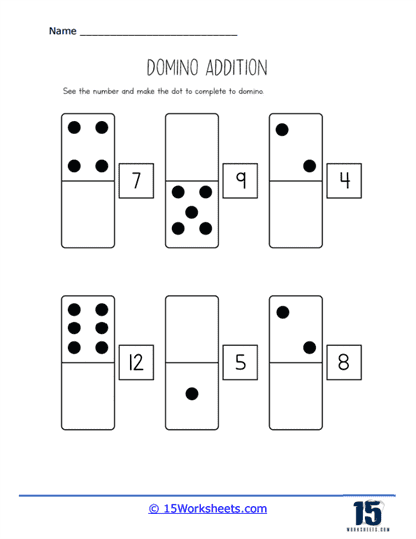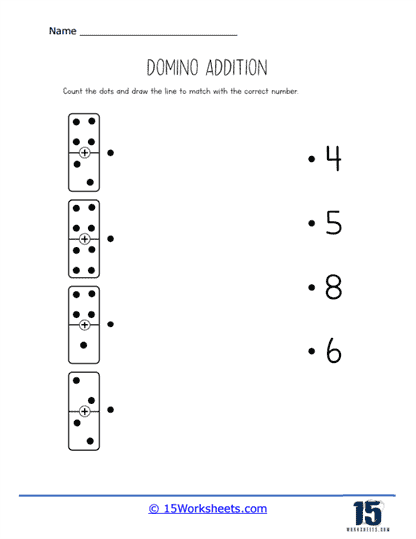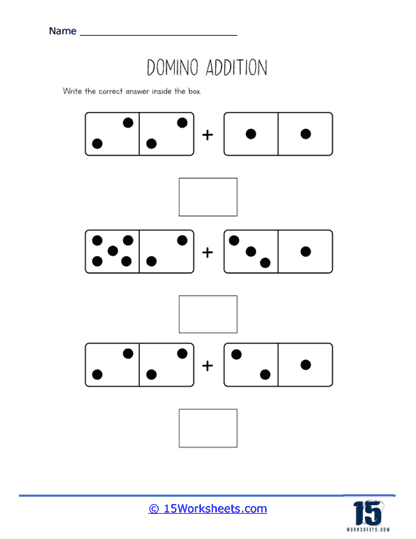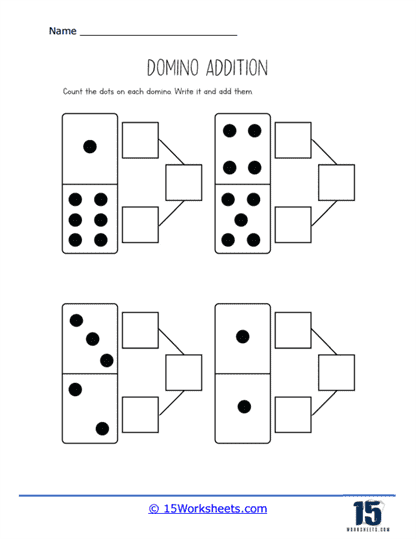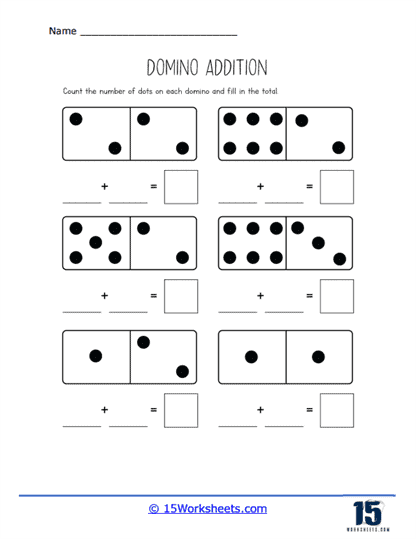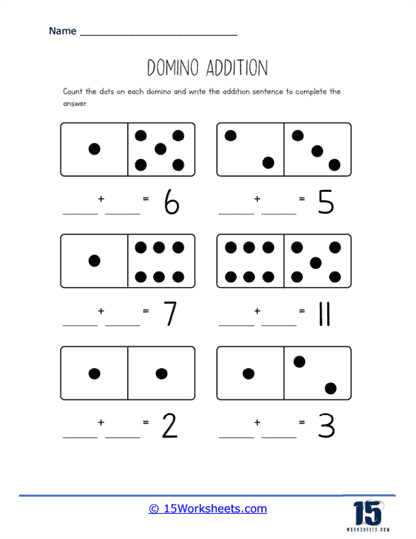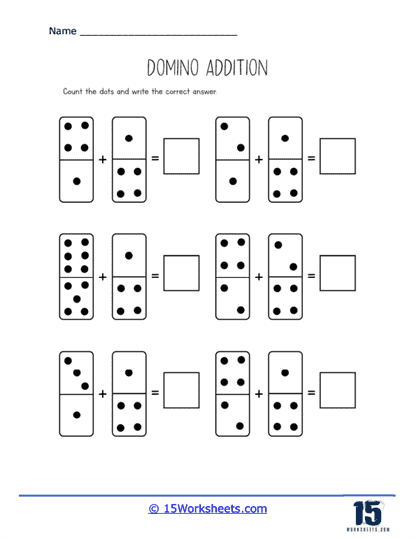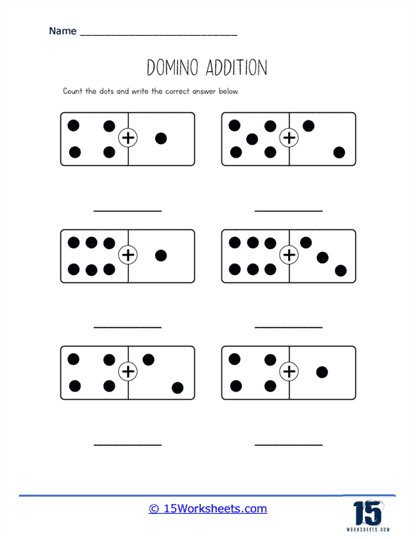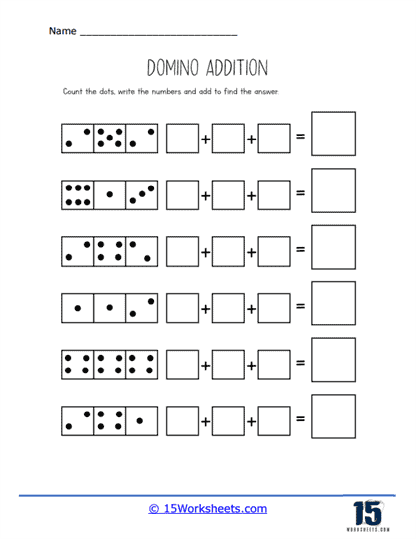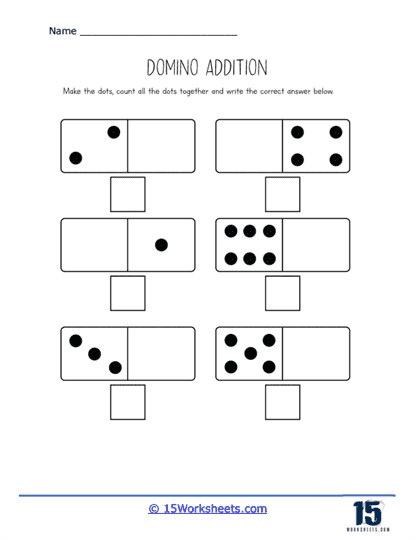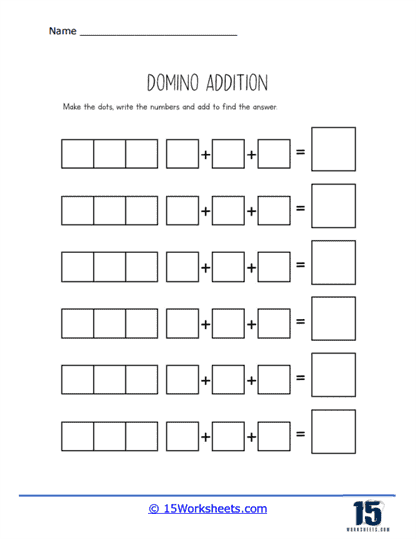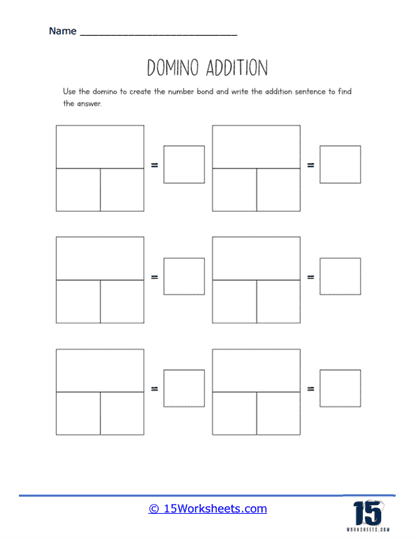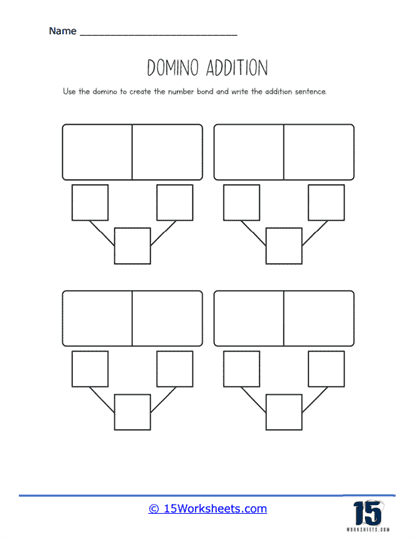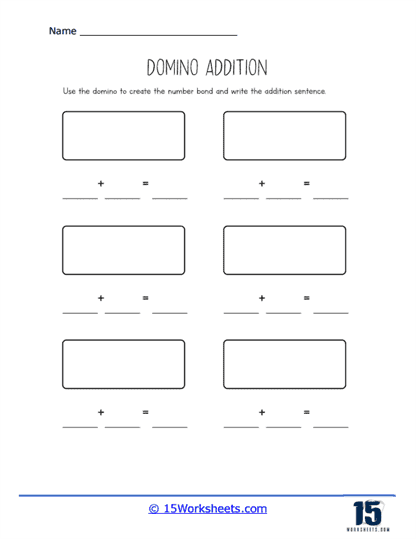Domino Addition Worksheets
About These 15 Worksheets
These worksheets use images of dominos, with each domino having a certain number of dots on each side. The goal is for students to add the number of dots on one side of the domino to the number of dots on the other side to find the total. They can be a fun and effective way for children to practice their addition skills. They combine visual learning (counting the dots on the dominos) with abstract learning (writing down and adding the numbers), which can help reinforce the concept of addition.
The worksheets may present these dominoes with dots already marked, with one side blank for students to complete, or with spaces for students to imagine or draw the dots themselves. The objective is to count the dots on each side of the domino and then add them together to find the total number of dots, which represents the sum of the two numbers.
The real goal here is to help students understand the concept of “part-part-whole,” a fundamental aspect of early mathematics education that helps students understand how smaller parts combine to make a larger whole. In this case, the two sides of the domino are the parts, and the total number of dots is the whole. This introduces children to the concept of the commutative property of addition.
A Look At The Individual Worksheets
The journey kicks off with Adding Horizontal Dominoes, where students simply count the dots on each end and add ’em up-sort of like dominoes got a college degree in arithmetic. Add Summing Uneven Domino, and now one side has more dots than the other-sneaky, but still countable. Then comes Domino Adds Up To and Addends to Sum, which bust out basic “find‑the‑pair” addition skills, helping kids grasp that numbers are like best friends who, when combined, make a bigger buddy. These exercises hammer in the part‑part‑whole concept using dot‑pictures-simple yet effective.
Next, the Domino Matching and Down the Domino worksheets turn counting into a brain‑y puzzle: match the domino with its sum or follow a trail of dominos and sums. Then Domino Addition Top and Bottom shakes things up by asking kids to calculate both halves independently-and maybe teach their left brain and right brain to coordinate for once. These templates reinforce whether you count left‑to‑right or top‑to‑bottom, showing that math doesn’t care about orientation-just results.
What’s That Add To?, Addend and Sum Domino, and 3 Domino Addends introduce the classic “find the missing piece” twist. Suddenly, the total or one side is hidden and the student plays detective. They flex reverse‑math muscles and uncover mysterious domino secrets. This cultivates critical thinking: not just adding-but probing.
Then it’s time to break out the artistic flair with Domino Making Sum and Make Your Own Dominoes. Here, children design their own puzzles-choose dots, add up, and craft a domino sequence with meaning (to them). It’s like giving them the composer’s baton. Create Addition Sentence and Domino Number Bonds extend it further, asking them to write out the numeric sentences and draw bonds between parts and wholes. This encourages students to articulate their thinking-not just solve it.
From Scratch is the blank‑canvas superstar, challenging kids to invent their own domino setups from zero, no prompts. It’s like telling them “you’re the artist-just add!” They learn deeper than counting-they learn invention. The whole collection blends visual counting, matching, missing pieces, creative design, and abstract representation-all delivered with the casual pep of a stand‑up comedy routine (at domino conferences).
What is the Commutative Property of Addition?
The commutative property of addition is one of the fundamental properties of arithmetic operations. It states that the order in which you add numbers does not change the sum. In other words, if you are adding two or more numbers, you can add them in any order and the result will be the same.
Mathematically, it can be expressed as follows for any real numbers a and b:
a + b = b + a
For example, if you are adding 3 and 5, according to the commutative property, you can add them as 3 + 5 or as 5 + 3, and you will get the same answer (8) either way.
This property is very useful for solving mathematical problems and simplifying calculations, as it allows us to rearrange terms in an expression to make the calculation easier.
It’s also a key concept that is often introduced early in a child’s mathematical education, typically around the same time they start learning about addition. It’s worth noting that this property holds for multiplication as well (a x b = b x a), but does not hold for subtraction or division.


